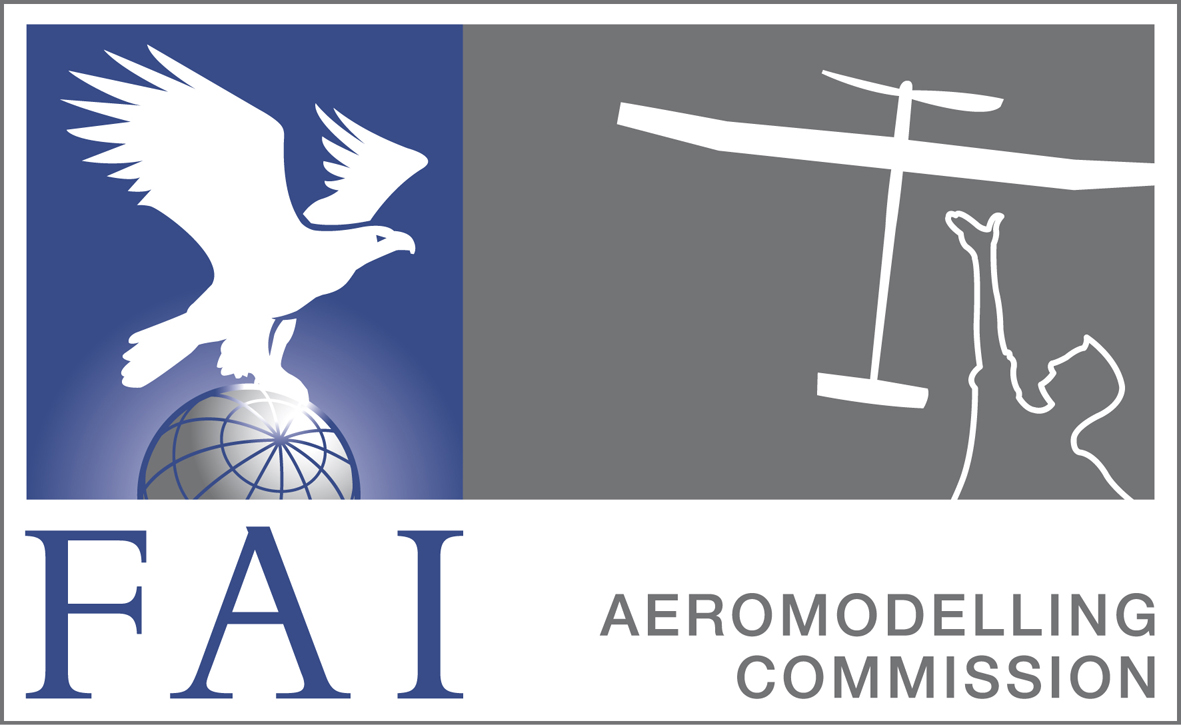
FAI Aeromodelling Commission (CIAM)
Outdoor models
Free Flight World Championships and many major competitions are flown with the following model classes:

F1A gliders - projected surface area 32-34 dm2, minimum weight 410g, towline 50m. Historically also known as A/2 Nordic gliders. The gliders are launched with 50m towlines, the tow hook allowing models to be flown in circles while searching for thermals during towing. The highest performance models are accelerated to high speed before release from the towline, resulting in a climb and bunt which can gain an additional 50m above the towline height.
F1B rubber power - projected surface area 17-19 dm2, minimum weight of model without motor 200g, maximum weight of rubber motor 30g. Also known as "Wakefields" after the prestigous trophy which is the award at the World Championships. Typical models have a wing span of 1.8m and climb to an altitude of at least 80m while the propeller running. The initial climb is vertical aided by a powerful launch, sometimes having the start of the propeller delayed until about a second after launch, becoming less steep before the propeller folds after about 40 seconds.
F1C power model - minimum loading 20 g/dm2, minimum total weight 300 g/cc, maximum volume of motor 2.5cc, maximum motor run 5 seconds. Typical models have a wing span of 2m and reach altitudes of well over 100m in the 5 seconds of climb.
The outline specifications are shown here, the full details are available in Volume F1 of the Sporting Code section 4.
These classes are flown to a maximum flight time of 3 minutes on each of 7 flights, with extended flight times applied in some rounds when conditions allow. Fly-off flights are flown to decide the final winner when there is a tie, with the maximum duration increasing by 2 minutes between each flyoff round.
- F1P is a simpler power model is flown as the power class in Junior World Championships. These models have motors with maximum capacity 1cc, a maximum wingspan limit of 1.5m, minimum projected area 26 dm2, minimum weight 250g, maximum motor run 7 seconds. Maximum flight duration 3 minutes for all flights.
- F1Q is a class for electric powered models. The performance is governed by an energy limit proportional to the mass of the model and a motor run time limit. For the flyoff the energy and motor runb limits are reduced. Maximum flight duration 3 minutes.
Smaller model classes are defined which have a lower performance and are flown in competitions with 5 flights and the shorter maximum flight times of 2 minutes, and are suitable for smaller flying fields. These are :
:
- F1G rubber power - minimum weight of model without motor 70g, maximum weight of rubber motor 10g. Historically known as "Coupe d'Hiver".
- F1H glider - maximum projected surface area 18 dm2, minimum weight 220g. Historically known A/1 gliders.
- F1J power model - minimum weight 160g, maximum volume of motor 1 cc, maximum motor run 5 seconds. This class originated in the 1/2A power model class, for a while it was used as the power class in Junior Championships, but this has now been superseded by the larger slower models of the F1P class.
- F1K carbon dioxide powered model - minimum weight 75g, maximum surface area 12 dm2, maximum volume of CO2 tank 2 cc
- F1S is a class of small electric powered aircraft. Originated in USA, the wingspan is limited to 36 inches (914.4mm) and batteries may be no more than 2-cell lithium
Another World Championship category of glider is F1E for slope soaring gliders. These models are steered into wind by an automatic system on the aircraft, usually a magnet linked to a rudder, and are flown for 5 flights with a maximum time of up to 5 minutes on each flight.
